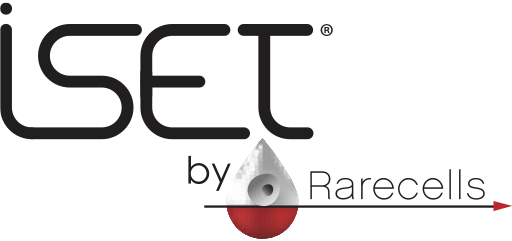As the U.S. Centers for Medicare & Medicaid Services (CMS) begins to fund lung-cancer screening using low-dose helical computerized tomography (CT) for those at high risk for lung cancer, the U.S. healthcare system is expected to spend approximately $2 billion annually on a screening tool that is far from perfect. A recent study points to the possibility of coupling CT screening with a special blood test (ISET) for circulating tumor cells (CTCs) as a way to stratify risk among the estimated 9 million Americans who would qualify for the new benefit. This dual approach could prioritize screening for those considered to be at the highest risk and significantly reduce the cost of universal screening.
The CMS decision to fund screening is based on the 2010 National Lung Screening Trial, which looked at 53,000 smokers in the U.S. aged 55-74. These patients were screened annually with low-dose helical CT and X-rays. When compared to patients who were screened using X-ray alone, the cohort screened with CT had overall reduction in mortality of 20%.
More recently guidelines from the American Society of Clinical Oncologists support annual CT scans of active and former smokers, specifically those between the ages of 55-74 who have a 30-year history of smoking. This is the population that will now be covered by Medicare screening. CMS is limiting funding to “heavy smokers,” or those who smoked at least 1-pack per day. The total U.S. population of this group is 9 million.
The decision is not without critics. Many worry about the radiation exposure from annual CT scans. Another risk comes from false positives. CT scanning is not perfect, often providing images that are nebulous. The 2010 National Lung Screen Trial revealed that invasive action taken as a result of a positive CT scan—such as biopsy or surgery—caused a significant number of deaths. Cost is another factor. The new Medicare benefit is expected to cost $9 billion in the first five years. In another study of this exact patient population, spiral CT scans found only 30% of lung tumors, leaving 70% undiagnosed[1].
Combining screening with ISET-CTC testing is one possible way to stratify risk and reduce the need for universal CT-scan screening. In this recent INSERM study, “Sentinel Circulating Tumor Cells Allow Early Diagnosis of Lung Cancer in Patients with Chronic Obstructive Pulmonary Disease,” researchers first screened yearly 168 high-risk lung cancer patients (COPD patients and smokers) and 86 controls with the ISET by Rarecells Circulating Tumor Cell (CTC) detection system[2] and low dose CT-scan. Three percent (=5) of the COPD patients tested positive for ISET-CTC. Within 4 years after ISET-CTC positivity, nascent lung tumors were detected by CT-scan in all five of these ISET-CTC positive patients and were quickly removed. Tumors were not found in those COPD patients who were found to be ISET-CTC negative nor in control subjects.
The five ISET-CTC positive patients were diagnosed and treated while in the very earliest stages of lung cancer: Stage 1A. And all remain in remission 16 months after surgery. Spiral CT screening can save many lives. But in the INSERM study, researchers were able to first identify those high risk patients at the greatest risk of lung cancer by testing for ISET-CTC.
Another documented risk of universal screening is the high rate of false positives. A recent article published by the New England Journal of Medicine noted that in a study of the impact of low-dose CT screening for lung cancer, a total of 96.4% of the positive screening results in the low-dose CT group
and 94.5% in the radiography group were false positive results[3]. This high rate of false positive often leads doctors to order additional CT scans weeks or months later in the attempt to gauge tumor growth. This greatly diminishes the value of the initial CT screening, as any cancer present will progress while the doctor and patient wait for the next set of scans. This progression of disease decreases the chances of eradicating the disease. Thus with these false positives and the use of serial scans, it may lead clinicians and patients to question the overall value of the low-dose CT screening.
Cost, false-positives, and over diagnosis are all real risks that result from universal screenings. Of course, for a cancer as deadly as lung cancer, these risks are mitigated by the high cost in human lives and treatment costs. However, it may be possible to stratify the risk among those at-risk for lung cancer using ISET-CTC detection with the Rarecells system. Of course, a large study would be required, but ISET-CTC screening of smokers may allow us to quickly identify those with the highest risk and prioritize them for further CT-scan screening. Early detection and effective treatment for these patients holds promise to save lives as well as costs to the healthcare system. For these reasons, the funding of a large-scale, multi-site trial of the ISET system to detect CTCs would be a wise investment from both public sources such as the National Institutes of Health as well as private sector sources.
[1] http://www.medicinenet.com/lung_cancer_pictures_slideshow/article.htm
[2] Ilie, et al. Sentinel Circulating Tumor Cells Allow Early Diagnosis of Lung Cancer in Patients with Chronic Obstructive Pulmonary Disease. PLOS One Published: October 31, 2014; DOI: 10.1371/journal.pone.0111597
[3]Reduced Lung-Cancer Mortality with Low-Dose Computed Tomographic Screening N Engl J Med 2011;365:395-409.
